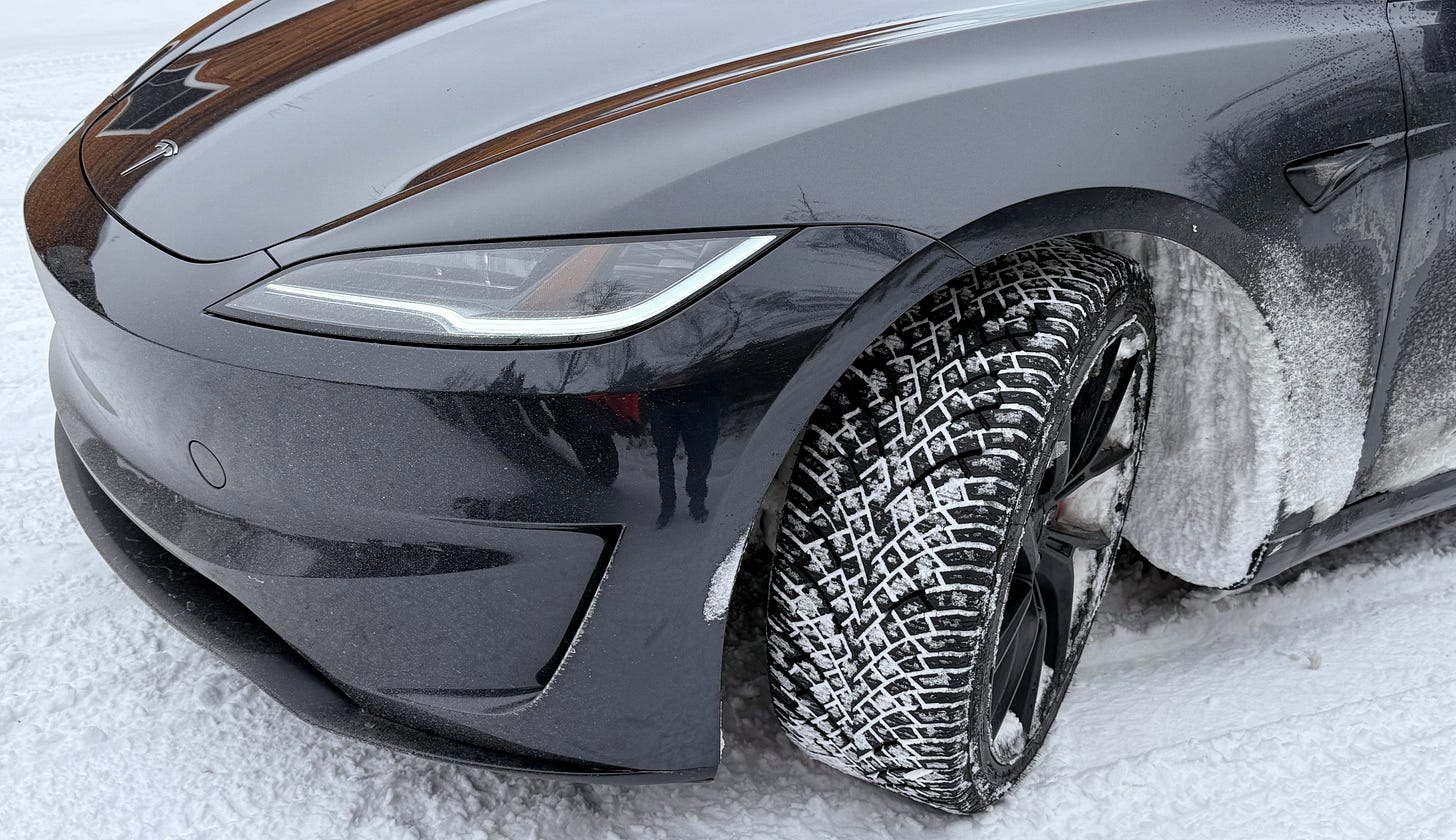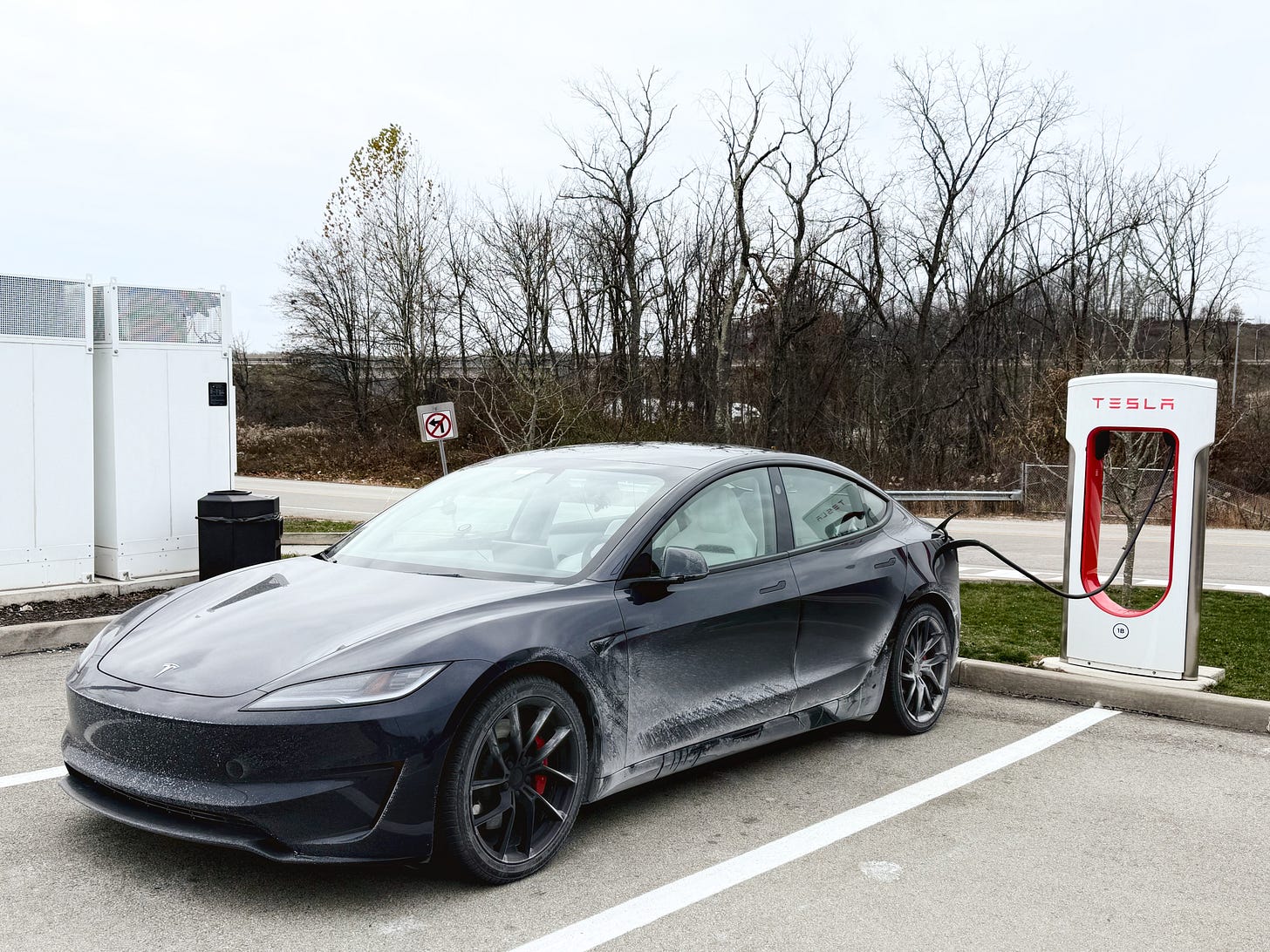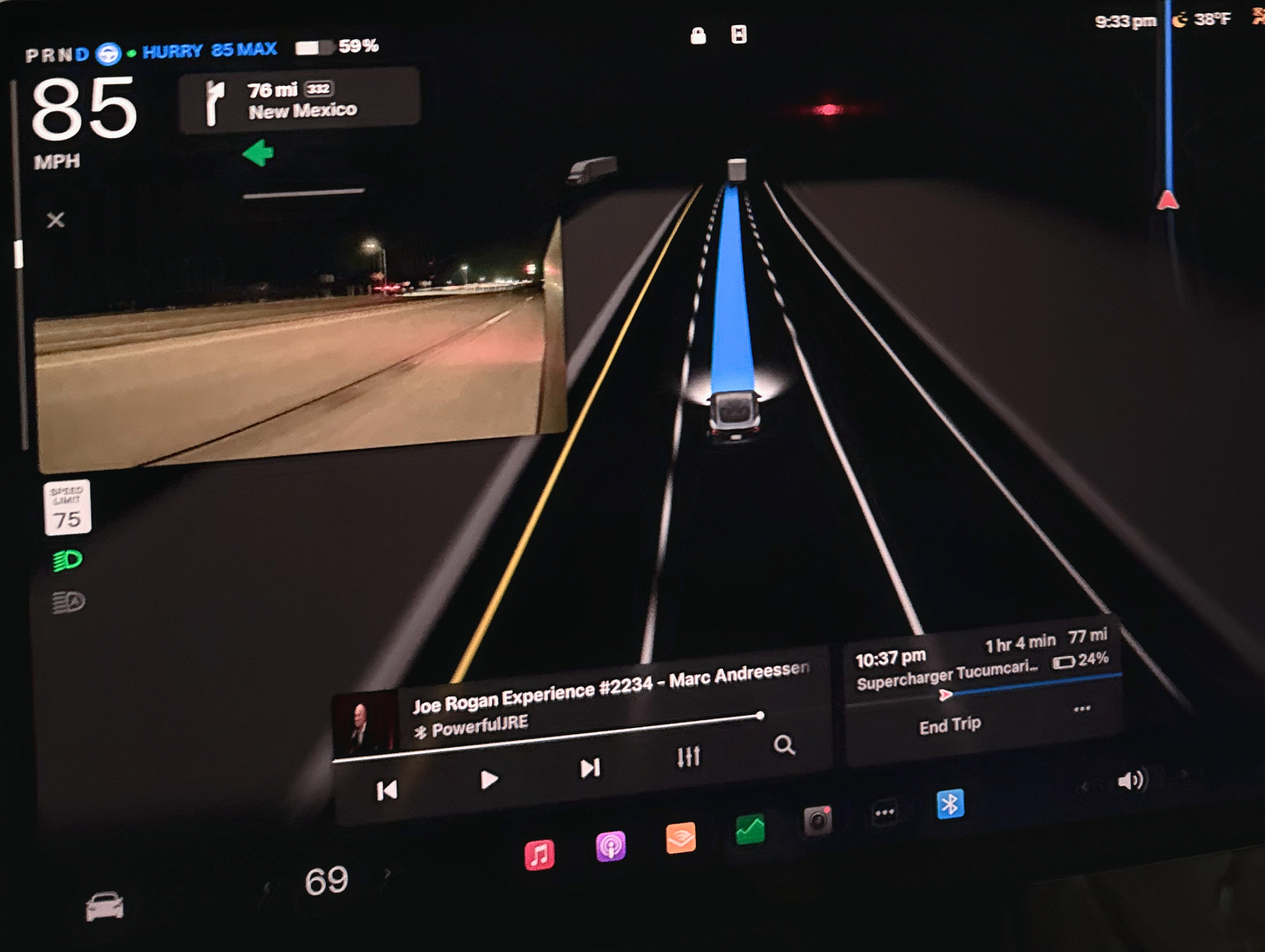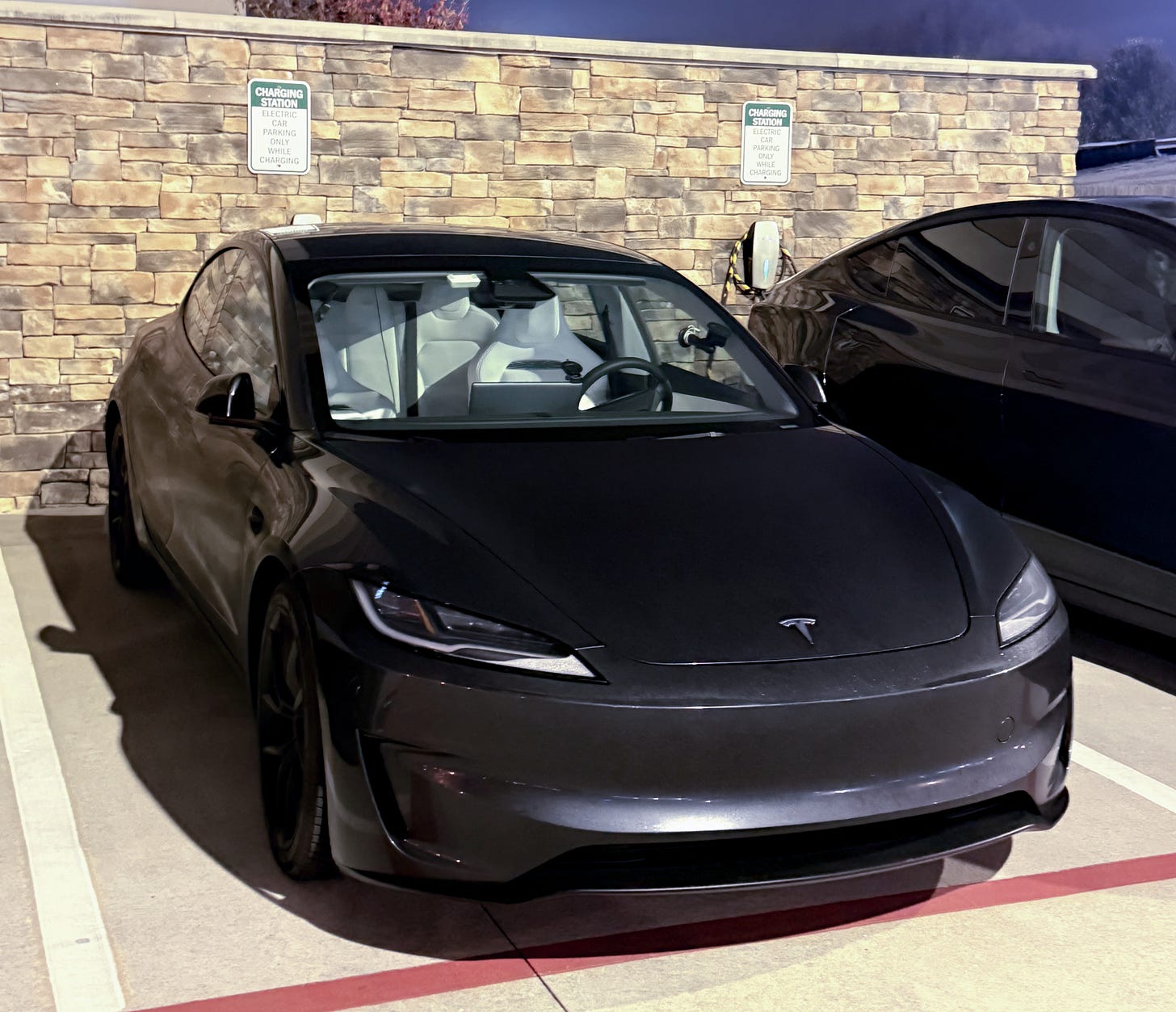REDONDO BEACH, Calif. — It's after midnight when I finally pull into the drive of The Portofino Hotel, stopping in front of a marker featuring two digital clocks: One displays the local time, and the other shows the time in Manhattan.
This is significant because it marks the end point of the amusingly-named Cannonball Baker Sea-to-Shining-Sea Memorial Trophy Dash between New York and Los Angeles, an "unofficial" time trial running nearly 3,000 miles between the two largest cities in the country. And I was the latest competitor.
Conceived in the '70s by Car and Driver editors Brock Yates and Steve Smith, the race was seen as a tongue-in-cheek celebration of the interstate highway system and protest against traffic laws. The traditional starting point is the Red Ball Garage on East 31st Street in Manhattan, finishing at The Portofino on the opposite coast.
The video above contains all my driving, with explanations of every disengagement and plenty of commentary. It also includes a 20x timelapse of all the “uneventful” driving — of which there was plenty. There’s also some great tunes running during the timelapse parts. Enjoy.
There are no "official" records, as winning involves committing numerous traffic infractions, but the modern record was set almost 20 years ago at 31 hours, 4 minutes in a modified BMW M5, averaging 90 miles per hour and using a spotter plane for some higher-speed stretches.
The current Cannonball Run record is an astonishing 25 hours and 39 minutes, but I'm not trying to break it today. It was set during the early days of the COVID-19 pandemic — when there was minimal traffic — and may never be beaten.
There are other records on the same route, too, including a 39:25 electric car-record that my friend Kyle Conner set a few months ago in a 2025 Porsche Taycan.
I made the journey in my 2024 Tesla Model 3 Performance, not for time (I stopped at hotels along the way) but to set a new record for touching the steering wheel as little as possible.
My car is fitted with Tesla's latest Full Self-Driving (FSD) software, an advanced driver assist system that handles nearly all driving tasks while the driver needs only to supervise. As a professional automotive reviewer, I needed to put FSD through its paces, and the Cannonball Run seemed the perfect test.
Here's where things get complicated: FSD is software, and it's constantly being updated. I was running the latest version, released in November, that features a newly updated highway driving system. It can handle nearly all driving tasks, including red lights, stop signs and highways, but what trips it up is... the humble parking lot.
As a result, I knew I would need to manually take over for the last couple of hundred feet around charging stations. Other than that limitation, I hoped that I wouldn't need to touch the steering wheel at all. I was (mostly) right.
I had three cameras running in the car at all times to capture the run, and I'm still reviewing the video. However, after more than 40 hours of driving, I'd estimate that I touched the steering wheel for less than five minutes. Many drive segments required no manual driving at all.
It's definitely not autonomous, and the driver is required to keep an eye on the road, which is verified by a camera inside the car that watches your eyes. Look down at a phone, your breakfast burrito or even the car's giant touchscreen for more than a few seconds and the car will gently (and then more insistently) ask that you get your attention back to the windshield. If you look away for too long, eventually, the car will disengage and force you to take over.
For full disclosure, that happened once on my journey when I spent a bit too long poring over the navigation screen while examining my next sequence of charging stops. I pulled over immediately and reset the system, but it was my longest hands-on moment of the trip — and it was entirely my fault, not the car's.
FSD certainly wasn't perfect. While it did well going through toll booths when it had a car to follow, the system had trouble deciding which lane to go in when approaching a toll booth on its own, showing another navigation-related edge case where the system needs a little more guidance.
Among the concerning moments, FSD strongly dislikes passing tractor-trailer trucks on sharper curves and, on more than one occasion, slowed significantly while next to a truck in the passing lane. It would have been better to continue on ahead as there was plenty of room to do so.
There were also two incidents when the highway was narrowing from three lanes to two, with the far-left lane merging into the middle, when the car seemed completely oblivious of the impending merge and nearly merged into another car rather than moving over in a more orderly manner. That said, there were other merges where it worked perfectly, so I'm not 100% sure what the issue was.
But these were mere foibles compared to the 3,000 miles of perfect control exhibited by Tesla's astonishingly good Full Self-Driving software. It successfully navigated roundabouts, red lights, sunlight and darkness, rain and snow, and, trickiest of all, all the other cars on the road.
You can't yet take a nap or watch a movie while it handles the driving, but we're not far from that point. FSD takes a significant leap forward in the upcoming version 13 release, which has already gone out to a few outside reviewers. A future update will allow cars to drive themselves directly to chargers and even park themselves in a spot. FSD will also be able to plan better, helping with stuff like those tricky highway merges.
Of course, since the main place I needed to take over was the last few hundred feet approaching a charger, once the car can do that itself, we'll be awfully close to a cross-country drive without needing to touch the steering wheel at all.
I guess I'll need to plan another Cannonball.
If you end up purchasing a Tesla after reading this piece, use the button below use my referral code. You’ll get a discount and I’ll get a credit towards charging or a future Tesla purchase.
Note: After I made my journey but before I published this or the video, my friend Alex Roy (who, ironically, I’d asked months earlier if he wanted to make the run with me), revealed his own FSD dash across the country. As his was nonstop and mine was made with stops, his is the more “authentic” Cannonball Run — however, we both saw impressive results and will likely make future attempts as the software (and its competitors) become more capable.
About our sponsor: I'm excited to partner with Nokian Tires. I've been running their winter tires on my own vehicles for years — both the studded and non-studded versions — long before they sent me free ones. Nokian has been making specialized winter tires since 1936, and they're genuinely the experts when it comes to cold-weather performance. What else would you expect from the Finnish?
They've also just launched the Surpass AS01, a new ultra-high-performance tire designed for longer tread life than typical UHP options.
Happy to answer any questions about tire choices for your specific vehicle and driving conditions — just comment below.








You did the Cannonbal?! I've been following the Cannonball for a long time; I love your unique approach to the run. I'll hold on to my combustion engine for as long as I can, but you make a strong argument with this. Congrats and fantastic write up, would love to see a video of the trip.